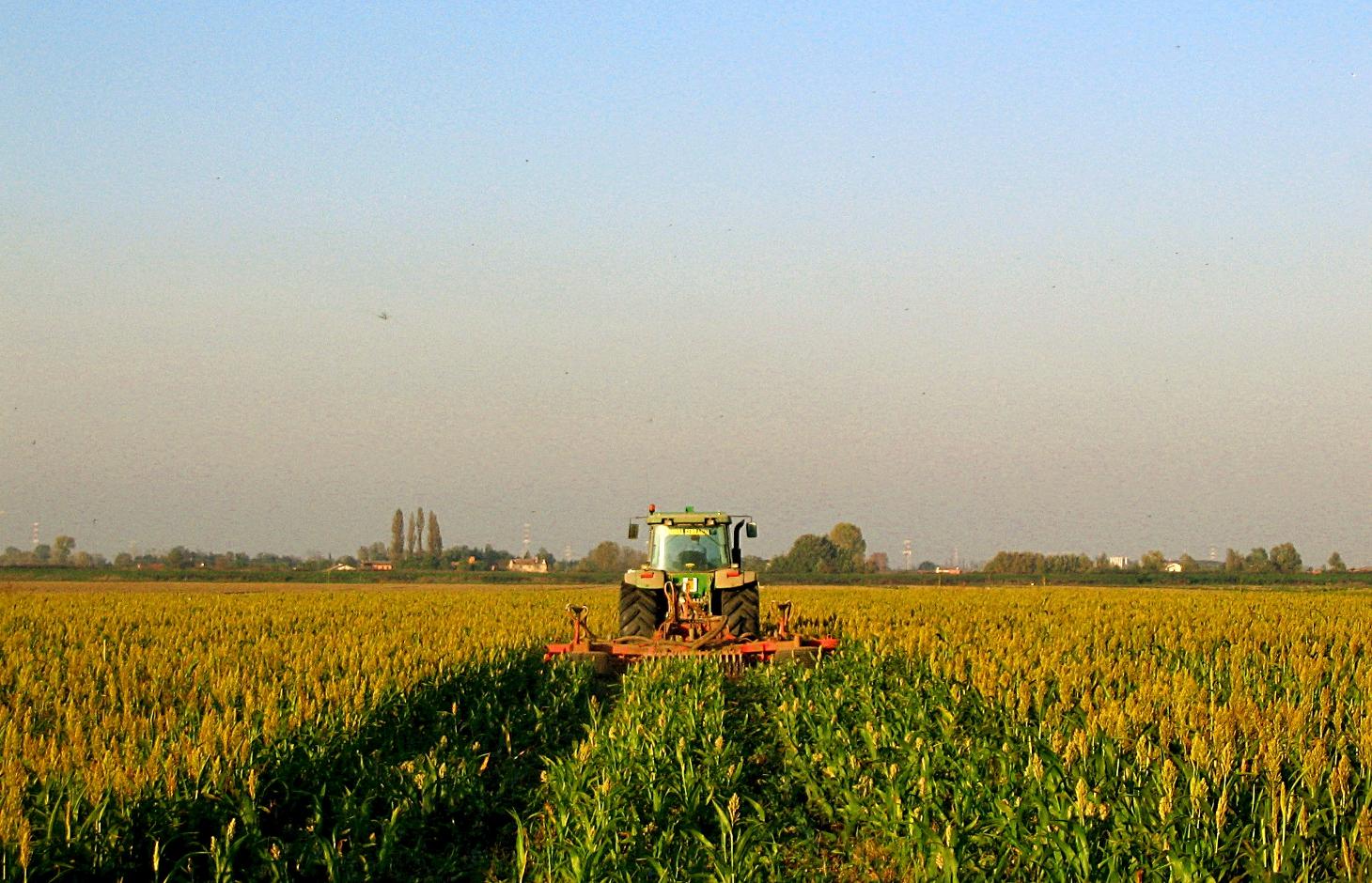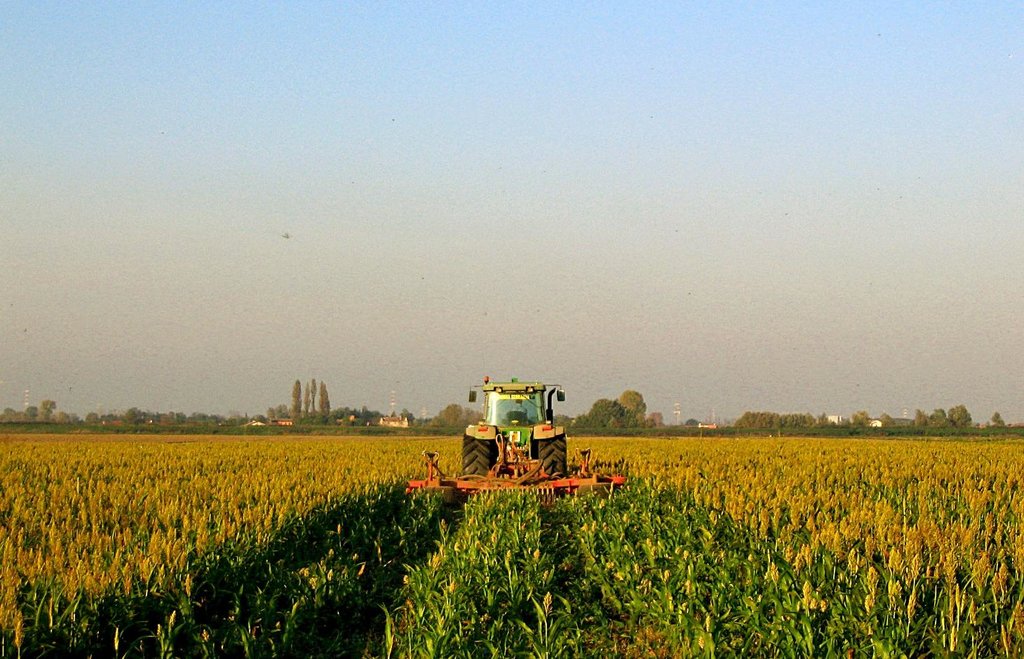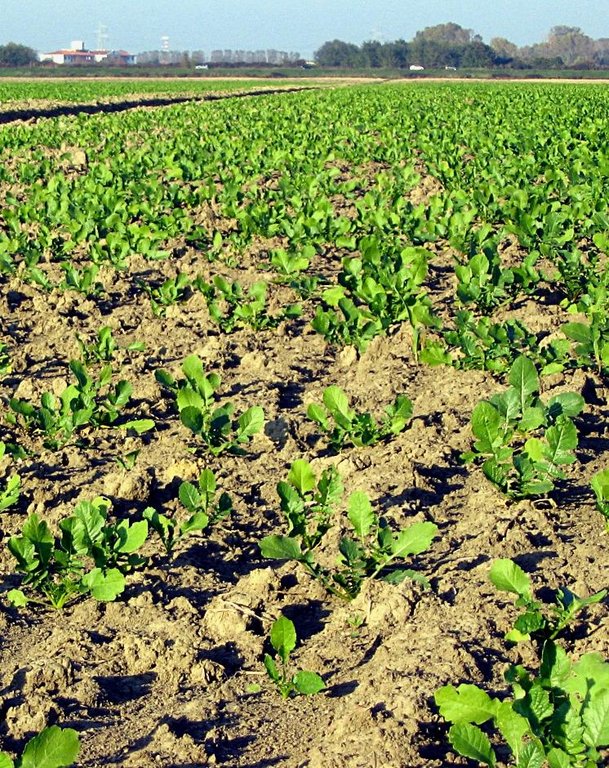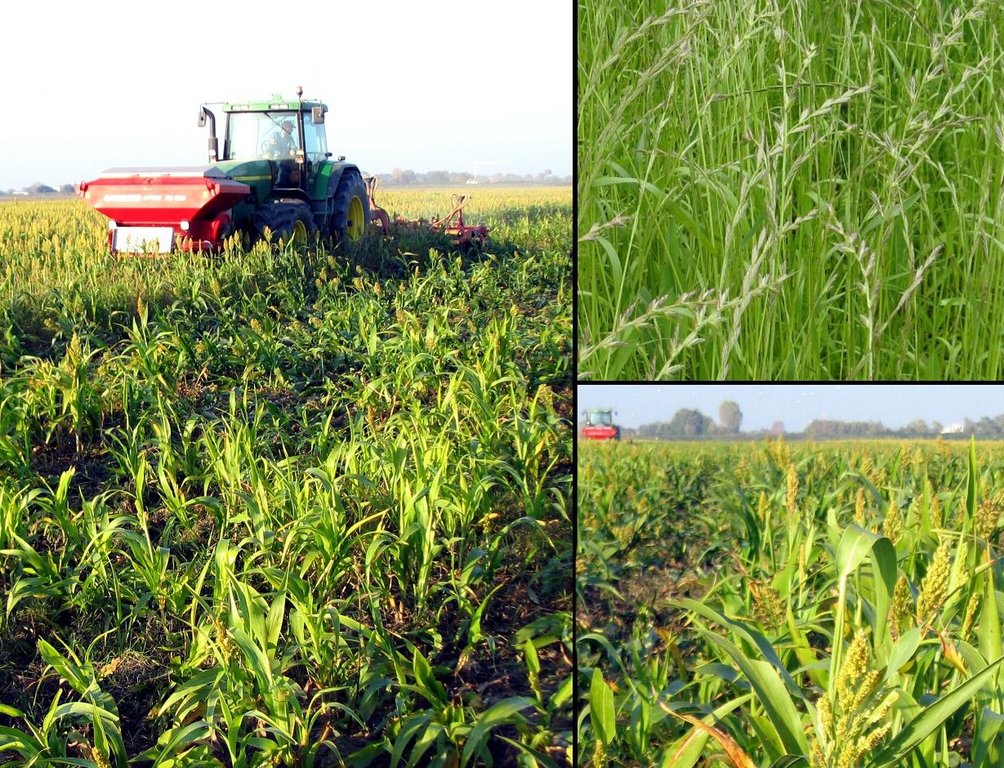Continuous soil cover on croplands [意大利]
- 创建:
- 更新:
- 编制者: Nicola Dal Ferro
- 编辑者: –
- 审查者: Fabian Ottiger, Alexandra Gavilano
Copertura continuativa del suolo
technologies_1217 - 意大利
查看章节
全部展开 全部收起1. 一般信息
1.2 参与该技术评估和文件编制的资源人员和机构的联系方式
SLM专业人员:
Morari Francesco
University of Padova
意大利
有助于对技术进行记录/评估的项目名称(如相关)
Preventing and Remediating degradation of soils in Europe through Land Care (EU-RECARE )有助于对技术进行记录/评估的机构名称(如相关)
University of Padova (UNIPD) - 意大利1.3 关于使用通过WOCAT记录的数据的条件
编制者和关键资源人员接受有关使用通过WOCAT记录数据的条件。:
是
1.5 参考关于SLM方法(使用WOCAT记录的SLM方法)的调查问卷
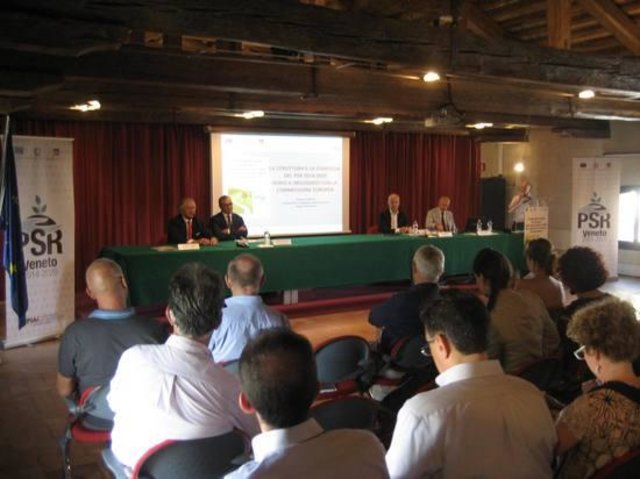
Rural development programme in the Veneto region [意大利]
Developing rural areas in the Veneto region through sustainable land management policies
- 编制者: Nicola Dal Ferro
2. SLM技术的说明
2.1 技术简介
技术定义:
Maintenance of continuous soil cover; alternating crops and cover crops as a practice to improve soil quality and reduce diffuse agricultural water pollution
2.2 技术的详细说明
说明:
Continuous soil cover on croplands in the Veneto region is characterised by growing seasonal cover crops alternated to the main crop. Continuous cover cropping has been promoted as an agri-environmental measure of the Rural Development Programme (RDP) by Veneto region to extend sustainable land management and reduce diffuse water pollution. Indeed cover crops incorporate available inorganic N that remains within the soil after harvest and reduce water erosion. The type of crop species depends on the crop succession.
Purpose of the Technology: Cover crops have been proposed to the farmers with the aim of reducing environmental impacts of traditional agricultural practices. Compared with systems that does not use cover crops, the continuous soil cover provides long-term agronomical and environmental benefits due to a reduction of negative impacts on agro-ecosystems.
Establishment / maintenance activities and inputs: The application of cover crops involves the alternation of autumn-winter cereals, rapeseed or other herbaceous crops with maize, soybean, sorghum etc. Cover crops that are sown after the main culture are neither fertilized nor treated with pesticides during growing, while at the end of the crop cycle they are buried as green manure in order to improve soil organic matter content, nutrient cycle and finally soil fertility.
Natural / human environment: Growing seasonal cover crops between annual crops have the potential to provide multiple benefits in a cropping system. Cover crops prevent water erosion and pollution as well as increase soil physical properties. Due to the effect of green manure and root growth, cover crops supply nutrients and increase soil organic matter content. They improve soil biodiversity and break pest cycles.
2.3 技术照片
2.5 已应用该技术的、本评估所涵盖的国家/地区/地点
国家:
意大利
区域/州/省:
Italy
有关地点的进一步说明:
Low Venetian plain of Veneto region
具体说明该技术的分布:
- 均匀地分布在一个区域
如果不知道精确的区域,请注明大致覆盖的区域:
- 10-100 平方千米
2.6 实施日期
如果不知道确切的年份,请说明大概的日期:
- 不到10年前(最近)
2.7 技术介绍
详细说明该技术是如何引入的:
- 通过项目/外部干预
3. SLM技术的分类
3.2 应用该技术的当前土地利用类型

农田
- 一年一作
年作 - 具体指明作物:
- 谷类 - 大麦
- 谷类 - 黑麦
- 谷类 - 高粱
- 豆科牧草和豆类 - 豆子
- 豆科牧草和豆类 - 豌豆
- Vetch (Fabacae)
每年的生长季节数:
- 1
具体说明:
Longest growing period in days: 210 Longest growing period from month to month: March to SeptemberSecond longest growing period in days: 180
注释:
Main crops : e.g. barley and vetch, ryegrass, sorghum
Major land use problems (compiler’s opinion): Soils in the low Venetian plain of the Veneto region generally suffer from a loss of soil organic matter (SOM) that is strongly affected by their natural texture and climatic conditions. Moreover, in the last 50 years intensive tillage practices contributed to a further SOM decrease, estimated at 0.02-0.58 t/ha/y of carbon. Finally, high intensive agriculture practices increased nonpoint source pollution and in turn caused a decline of surface and groundwater quality.
Major land use problems (land users’ perception): To date, few farmers have adopted voluntarily the continuous soil cover to reduce a decline of soil fertility and water quality, symptom of poor perception of the problem. Adoption of SLT by farmers was sustained only by means of regional subsidies.
3.4 供水
该技术所应用土地的供水:
- 混合雨水灌溉
注释:
Water supply: Also rainfed, full irrigation
3.5 该技术所属的SLM组
- 改良的地面/植被覆盖
3.6 包含该技术的可持续土地管理措施

农艺措施
- A1:植被和土壤覆盖层
注释:
Main measures: agronomic measures
Type of agronomic measures: cover cropping, green manure
3.7 该技术强调的主要土地退化类型

土壤水蚀
- Wt:表土流失/地表侵蚀

化学性土壤退化
- Cn:肥力下降和有机质含量下降(非侵蚀所致)

生物性退化
- Bc:植被覆盖的减少
- Bp:害虫/疾病增加,捕食者减少

水质恶化
- Hp:地表水水质下降
注释:
Main type of degradation addressed: Wt: loss of topsoil / surface erosion, Cn: fertility decline and reduced organic matter content, Bc: reduction of vegetation cover, Hp: decline of surface water quality
Secondary types of degradation addressed: Bp: increase of pests / diseases, loss of predators
Main causes of degradation: soil management (lack of organic input with fertilizations), population pressure (high population density and competition for land)
Secondary causes of degradation: crop management (annual, perennial, tree/shrub) (crop monoculture instead of crop rotation)
3.8 防止、减少或恢复土地退化
具体数量名该技术与土地退化有关的目标:
- 防止土地退化
- 减少土地退化
注释:
Main goals: mitigation / reduction of land degradation
Secondary goals: prevention of land degradation
4. 技术规范、实施活动、投入和成本
4.1 该技术的技术图纸
技术规范(与技术图纸相关):
Continuous soil cover is here carried out with direct sowing of ryegrass on a sorghum field. Sorghum was in turn used as cover crop after harvesting of winter wheat.
Location: Low Venetian plain of Veneto region
Technical knowledge required for field staff / advisors: moderate
Technical knowledge required for land users: low
Main technical functions: control of raindrop splash, improvement of ground cover, increase of surface roughness, improvement of water quality, buffering / filtering water
Secondary technical functions: control of dispersed runoff: impede / retard, improvement of surface structure (crusting, sealing), increase in organic matter, increase in nutrient availability (supply, recycling,…), sediment retention / trapping, sediment harvesting
Cover cropping
Material/ species: e.g. barley and vetch, ryegrass, sorghum
Quantity/ density: 35 kg/ha
Green manure
Material/ species: e.g. sudan grass
Quantity/ density: 1.5-6 t/ha
Remarks: Strongly dependant on: 1) type of cover crop; 2) differentiation between summer and winter c.c.
作者:
Nicola Dal Ferro
4.2 有关投入和成本计算的一般信息
其它/国家货币(具体说明):
Euro €
如相关,注明美元与当地货币的汇率(例如1美元=79.9巴西雷亚尔):1美元=:
0.8
注明雇用劳工的每日平均工资成本:
21.00
4.3 技术建立活动
注释:
No initial investment needed
4.5 维护/经常性活动
| 活动 | 时间/频率 | |
|---|---|---|
| 1. | Cover crops: chopping | |
| 2. | Main crop: seedbed preparation | |
| 3. | Main crop: harrowing | |
| 4. | Main crop: weed control | |
| 5. | Main crop: fertilisation | |
| 6. | Main crop: harvesting | |
| 7. | Cover crops: sowing |
4.6 维护/经常性活动所需要的费用和投入(每年)
| 对投入进行具体说明 | 单位 | 数量 | 单位成本 | 每项投入的总成本 | 土地使用者承担的成本% | |
|---|---|---|---|---|---|---|
| 设备 | Cover crop chopping | ha | 1.0 | 343.0 | 343.0 | |
| 设备 | Main crop: seedbed preparation | ha | 1.0 | 191.0 | 191.0 | |
| 设备 | Main crop: harrowing | ha | 1.0 | 63.0 | 63.0 | |
| 设备 | Main crop: weed control | ha | 1.0 | 44.5 | 44.5 | |
| 设备 | Main crop: harvesting | ha | 1.0 | 152.0 | 152.0 | |
| 设备 | Cover crops: sowing | ha | 1.0 | 121.0 | 121.0 | |
| 植物材料 | Seeds main crop | ha | 1.0 | 190.5 | 190.5 | |
| 植物材料 | Seeds cover crop | ha | 1.0 | 191.0 | 191.0 | |
| 肥料和杀菌剂 | Main crop: fertilisation (fertilizer) | ha | 1.0 | 254.0 | 254.0 | |
| 肥料和杀菌剂 | Main crop: weed control (biocides) | ha | 1.0 | 125.0 | 125.0 | |
| 技术维护所需总成本 | 1675.0 | |||||
| 技术维护总成本,美元 | 2093.75 | |||||
4.7 影响成本的最重要因素
描述影响成本的最决定性因素:
Although machinery costs are the largest part of total ones, they are almost completely the same for systems adopting - or non adopting - the technology. As a result, additional seeds as cover crop and field labour for sowing are the main costs for implementation of the technology.
5. 自然和人文环境
5.1 气候
年降雨量
- < 250毫米
- 251-500毫米
- 501-750毫米
- 751-1,000毫米
- 1,001-1,500毫米
- 1,501-2,000毫米
- 2,001-3,000毫米
- 3,001-4,000毫米
- > 4,000毫米
农业气候带
- 半湿润
Thermal climate class: temperate
5.2 地形
平均坡度:
- 水平(0-2%)
- 缓降(3-5%)
- 平缓(6-10%)
- 滚坡(11-15%)
- 崎岖(16-30%)
- 陡峭(31-60%)
- 非常陡峭(>60%)
地形:
- 高原/平原
- 山脊
- 山坡
- 山地斜坡
- 麓坡
- 谷底
垂直分布带:
- 0-100 m a.s.l.
- 101-500 m a.s.l.
- 501-1,000 m a.s.l.
- 1,001-1,500 m a.s.l.
- 1,501-2,000 m a.s.l.
- 2,001-2,500 m a.s.l.
- 2,501-3,000 m a.s.l.
- 3,001-4,000 m a.s.l.
- > 4,000 m a.s.l.
5.3 土壤
平均土层深度:
- 非常浅(0-20厘米)
- 浅(21-50厘米)
- 中等深度(51-80厘米)
- 深(81-120厘米)
- 非常深(> 120厘米)
土壤质地(表土):
- 粗粒/轻(砂质)
- 中粒(壤土、粉土)
表土有机质:
- 中(1-3%)
- 低(<1%)
如有可能,附上完整的土壤描述或具体说明可用的信息,例如土壤类型、土壤酸碱度、阳离子交换能力、氮、盐度等。:
Soil fertility is low-medium
Soil drainage/infiltration is medium
Soil water storage capacity is medium
5.4 水资源可用性和质量
地下水位表:
< 5米
地表水的可用性:
好
水质(未处理):
良好饮用水
关于水质和水量的注释和进一步规范:
Ground water table: <5m (The area surrounding the Venice lagoon (1240 km2) is even below the sea level (down to -2 m) and currently cultivated due to land reclamation. As a result water table is kept artificially low)
Water quality (untreated) is good drinking water (groundwater) or for agricultural use only (surface water)
5.5 生物多样性
物种多样性:
- 中等
关于生物多样性的注释和进一步规范:
High population density, infrastructures and intensive agriculture practices affect the state of biodiversity.
5.6 应用该技术的土地使用者的特征
生产系统的市场定位:
- 商业/市场
非农收入:
- 低于全部收入的10%
相对财富水平:
- 平均水平
- 丰富
个人或集体:
- 个人/家庭
机械化水平:
- 机械化/电动
说明土地使用者的其他有关特征:
Land users applying the Technology are mainly common / average land users
Population density: 200-500 persons/km2
Annual population growth: 0.5% - 1%
5% of the land users are rich.
95% of the land users are average wealthy.
5.7 应用该技术的土地使用者使用的平均土地面积
- < 0.5 公顷
- 0.5-1 公顷
- 1-2 公顷
- 2-5公顷
- 5-15公顷
- 15-50公顷
- 50-100公顷
- 100-500公顷
- 500-1,000公顷
- 1,000-10,000公顷
- > 10,000公顷
这被认为是小规模、中规模还是大规模的(参照当地实际情况)?:
- 中等规模的
5.8 土地所有权、土地使用权和水使用权
土地使用权:
- 租赁
- 个人
5.9 进入服务和基础设施的通道
健康:
- 贫瘠
- 适度的
- 好
教育:
- 贫瘠
- 适度的
- 好
技术援助:
- 贫瘠
- 适度的
- 好
就业(例如非农):
- 贫瘠
- 适度的
- 好
市场:
- 贫瘠
- 适度的
- 好
能源:
- 贫瘠
- 适度的
- 好
道路和交通:
- 贫瘠
- 适度的
- 好
饮用水和卫生设施:
- 贫瘠
- 适度的
- 好
金融服务:
- 贫瘠
- 适度的
- 好
6. 影响和结论性说明
6.1 该技术的现场影响
社会经济效应
生产
作物生产
水资源可用性和质量
饮用水的可用性
灌溉用水的可用性
灌溉用水的质量
收入和成本
工作量
社会文化影响
国家机构
SLM/土地退化知识
Improved livelihoods and human well-being
生态影响
水循环/径流
水质
地表径流
土壤
土壤覆盖层
土壤流失
养分循环/补给
土壤有机物/地下C
生物多样性:植被、动物
生物量/地上C
害虫/疾病控制
6.2 该技术的场外影响已经显现
下游洪水
地下水/河流污染
缓冲/过滤能力
6.3 技术对渐变气候以及与气候相关的极端情况/灾害的暴露和敏感性(土地使用者认为的极端情况/灾害)
渐变气候
渐变气候
| 季节 | 增加或减少 | 该技术是如何应对的? | |
|---|---|---|---|
| 年温度 | 增加 | 未知 |
6.4 成本效益分析
技术收益与技术维护成本/经常性成本相比如何(从土地使用者的角度看)?
短期回报:
轻度消极
长期回报:
稍微积极
注释:
Establishment costs N/A
6.5 技术采用
在所有采用这项技术的人当中,有多少人是自发的,即未获得任何物质奖励/付款?:
- 0-10%
注释:
100% of land user families have adopted the Technology with external material support
6.7 该技术的优点/长处/机会
| 编制者或其他关键资源人员认为的长处/优势/机会 |
|---|
|
Prevents erosion How can they be sustained / enhanced? Maintenance of cover crop |
|
Improves soil fertilty, biodiversity, structure, organic matter content How can they be sustained / enhanced? Usage of organic fertilizations on the main crop |
|
Allows natural control of weeds How can they be sustained / enhanced? Higher seeding rate |
|
Improves knowledge on soil cover benefits and agroecology How can they be sustained / enhanced? Improve farmers' education |
6.8 技术的弱点/缺点/风险及其克服方法
| 土地使用者认为的弱点/缺点/风险 | 如何克服它们? |
|---|---|
| Increase costs of input and management | Increase awareness on long-term soil benefits and keep subsidies |
| In summer seasons increases the competition for water resources | improve planning and knowledge of suitable species |
7. 参考和链接
7.1 信息的方法/来源
7.2 参考可用出版物
标题、作者、年份、ISBN:
Programma di sviluppo rurale per il veneto 2007-2013, Regione Veneto, 2007. Dipartimento Agricoltura e Sviluppo Rurale.
链接和模块
全部展开 全部收起链接

Rural development programme in the Veneto region [意大利]
Developing rural areas in the Veneto region through sustainable land management policies
- 编制者: Nicola Dal Ferro
模块
无模块


